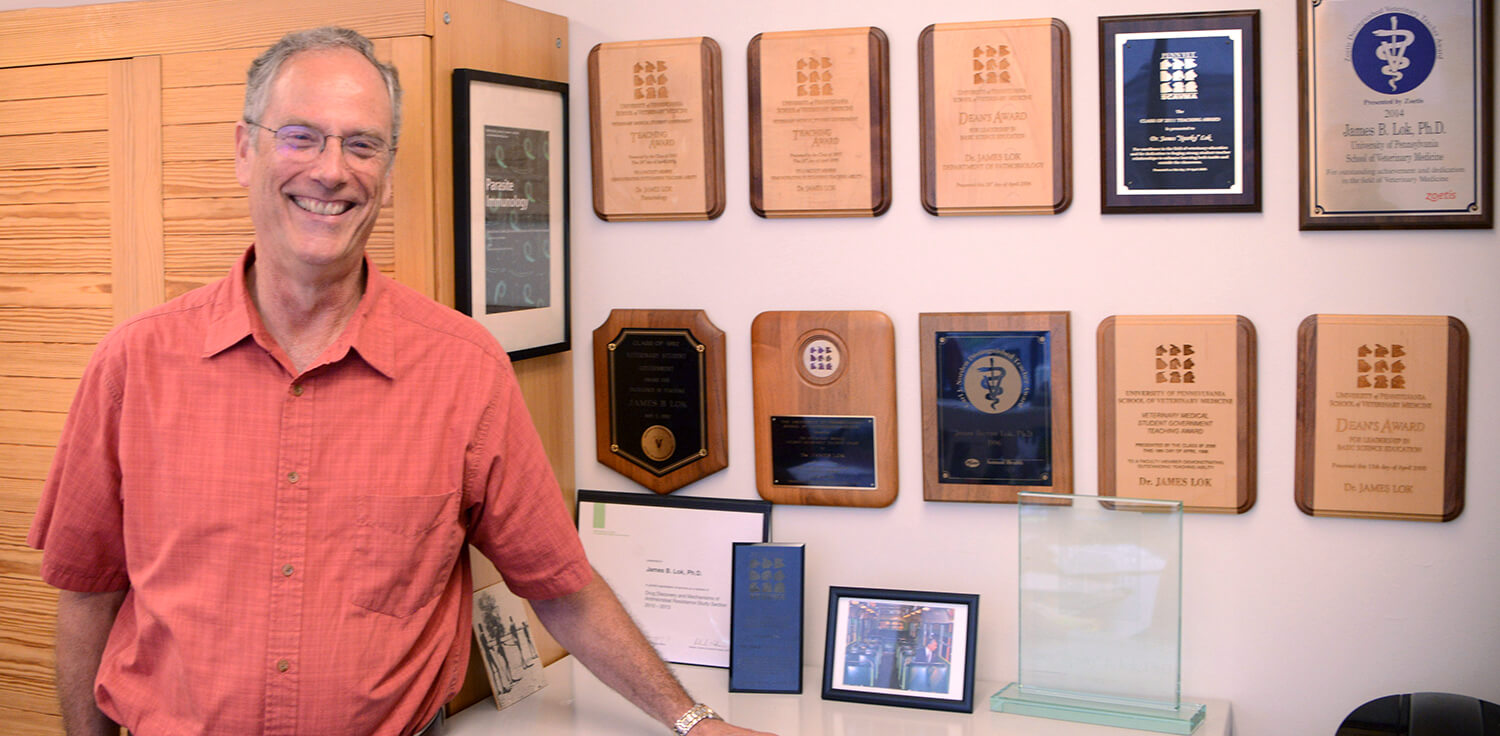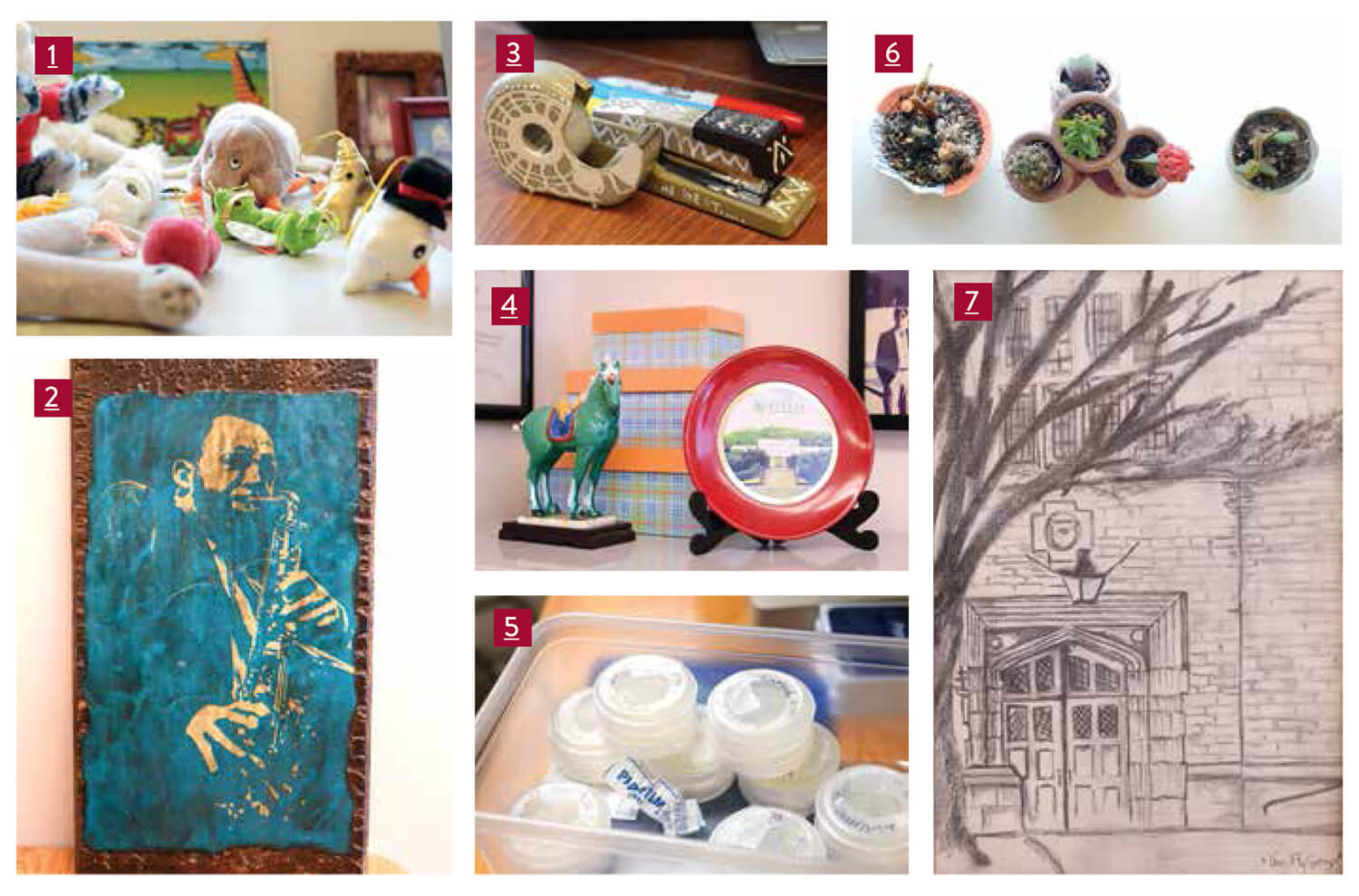
In his more than 30 years with Penn Vet, Dr. James “Sparky” Lok, Professor of Parasitology, has accumulated a lot of awards. Most recently, the American Society of Parasitologists named him the Bueding and von Brand Lecturer for 2018 for making major research contributions to the fields of biochemistry, molecular biology, and/or pharmacology of parasitic helminths.
Lok is most proud of the many awards that recognize him as great teacher — in 2014 he received the Association of American Veterinary Medicine College’s prestigious Zoetis Distinguished Teacher Award.
“I love teaching, and I love the character of veterinary students,” said Lok. “I think Penn Vet students are particularly remarkable. They come to vet school for the love of the subject, not only the animals, but also the science that goes into being a veterinarian. I was told when I first came to Penn Vet that we look at veterinarians as applied scientists, and I’ve seen that to be the case with our students, maybe more than at any other vet school. This is one of the things that I am really proud of about the School and our students.”
Lok’s Penn Vet office is in the Rosenthal Building, where his lab’s primary research focuses on factors affecting the development and lifespan of parasitic nematodes. These pathogenic organisms cause illness, debilitation, and even death in billions of people worldwide, especially in areas of extreme poverty. Lok and his team work specifically with the intestinal threadworm, or Strongyloides stercoralis, to understand what regulates the worm’s development as it infects a host body, human or otherwise.

1 Microbe Soft Toys
I’ve amassed a nice collection of soft microbes and other ectoparasites, which live on the outside of their host’s body. Students bring them to me. Of course, in the real world these organisms are mostly microscopic and don’t have eyes or wear hats, but I suppose the soft microbe people have to make them look warm and fuzzy. My collection includes a heart worm, flea, mange mite, and Caenorhabditis (C.) elegans — and there’s even a cute white blood cell with a carrot nose.
2 Blues Musician
I play the saxophone, although I haven’t practiced regularly in years. As I contemplate what may come after life at Penn, I think about getting out my horn and back to practicing. I saw this piece in someone’s trash one day when I was walking near home. So, I picked it!
3 Stapler and Tape
When my daughters were little they’d sometimes come to work with me. They were bored to tears and would find the Wite-Out and start decorating. Somewhere in the lab, there’s a similarly embellished 3-hole punch. It’s hard for anyone to walk away with my stapler or tape because they’re obviously mine.
4 Souvenirs
A research specialist in my lab gave me the horse from China. I was gifted with the little commemorative plate on a trip to Huazhong Agricultural University in Wuhan. We’ve had a long collaboration with a parasitology group at the school, and I’ve spent a couple of summers in China, in Wuhan, and in Beijing at the China Agricultural University.
5 Worms, Worms, Worms
Here in the lab, we genetically modify C. elegans, which are free-living nonparasitic nematodes, and Strongyloides to help us understand the function of different genes in parasitic nematodes. C. elegans are very easy to maintain, and they’re hermaphroditic. Put one on the plate, then come back in three or four days and the plate will be crawling with dozens of worms. By comparison, parasitic nematodes are very difficult to work with. They can’t complete their life cycles outside a living host, so maintaining them and simply doing experiments with them is a challenge. Genetic modification is a little easier with Strongyloides than with other parasites so that’s why we work with them. I’ve been working with this particular system for more than 20 years and these worms still fascinate me; I could still spend all afternoon just gazing at them.
6 Cacti
My wife and a good friend of ours in New Mexico thought my office needed plant life, and they also know I have some negligent character traits. They figured surely I’d be able to care for a cactus, but I’ve shown them that I’m too unreliable for even cacti. Some of the plants are doing well, but those on the left show blatant negligence on my part. Even still, the plants bring a little of New Mexico, an area I love, to this corner of Philadelphia.
7 Student Art
Typically, Penn Vet students have studied biology in college and have a science bent. But many of our students also come from unexpected disciplines. One of my former students did this nice charcoal of the façade of Penn’s Houston Hall. She had a background in theatre and visual arts, and she also excelled as a vet student. She won a cardiology prize the year she graduated.